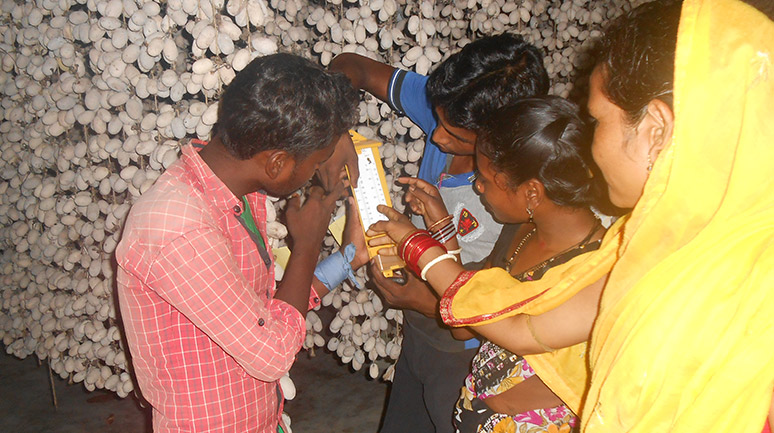My Journey with Tasar Sericulture


Recounting his initial engagement with tasar as a livelihoods option for the tribals of Chaibasa district, the author describes how over the last two decades this has become a meaningful though challenging involvement, requiring perseverance and optimism
S OON AFTER I COMPLETED MY B.Sc. (Forestry) from Birsa Agriculture University, Ranchi, in January 1996, I joined PRADAN as a Development Apprentice. I was in search of a job in the NGO sector that would allow me to continue to live in Ranchi to pursue my Masters. I considered it a transitory arrangement as my plan, in the long run, was to get a government job. I shared this plan with Achintya and Bismaya, who interviewed me in PRADAN’s Ranchi office. They insisted that I visit a PRADAN project in Bihar before taking a decision to join the organization.
I visited PRADAN’s Chaibasa project. The field visits, along with interactions with the members of PRADAN’s Chaibasa team, completely changed my perception about NGOs. I was particularly impressed by the seriousness with which PRADAN members engaged with the community and worked to promote improved farming, supported by small irrigation schemes. Later on, Achintya asked me to join the Godda project because it was my home district and tasar was related to the subject I had studied in college.
During the initial months of Apprenticeship, there was no particular work assigned to me. I would interact freely with the villagers, observe and learn about the various aspects of village life and write reports and share them with my colleagues. Being a forestry man, I enjoyed exploring the forest.

